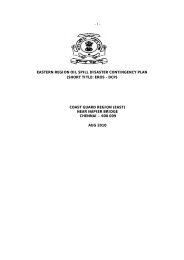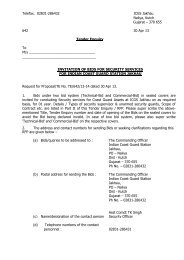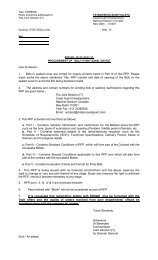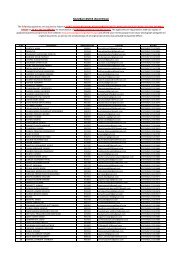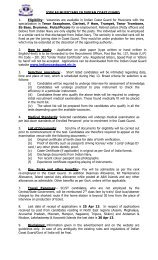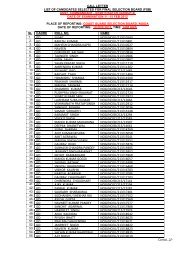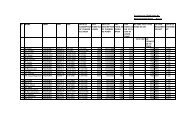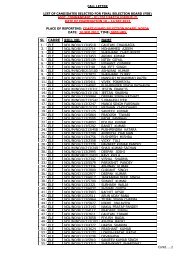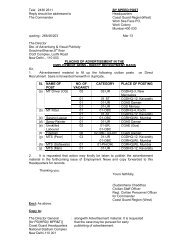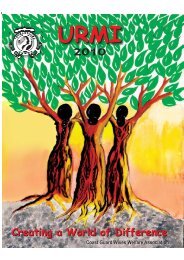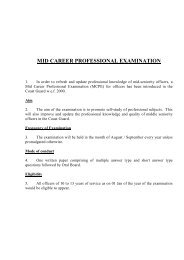Jan 2009 edition - Indian Coast Guard
Jan 2009 edition - Indian Coast Guard
Jan 2009 edition - Indian Coast Guard
Create successful ePaper yourself
Turn your PDF publications into a flip-book with our unique Google optimized e-Paper software.
<strong>Jan</strong> <strong>2009</strong> Vol X Issue 1<br />
Some of the shoreline cleanup methods are as follows :-<br />
Shoreline Clean-up Methods<br />
(a) Natural Recovery : No attempt to remove any<br />
stranded oil in order to minimize impact to the environment,<br />
or because there is no effective method for clean-up. Oil<br />
is left in place to degrade naturally. This type of cleanup<br />
measure is used when the natural removal rates are fast<br />
(e.g., gasoline evaporation, high energy coastlines), when<br />
the degree of oiling is light, or when clean-up actions will<br />
do more harm than natural removal. This method may be<br />
inappropriate for areas used by high numbers of mobile<br />
animals (birds, marine mammals) or endangered species.<br />
(b) Barriers/Berms : This method is adopted to prevent<br />
entry of oil into a sensitive area or to divert oil to a collection<br />
area. In this method a physical barrier (other than a boom)<br />
is placed across an area to prevent oil from passing. Barriers<br />
can consist of earthen berms, trenching, or filter fences.<br />
When it is necessary for water to pass because of water<br />
volume, underflow or overflow dams are used.<br />
The shoreline cleanup methods vary from shore to<br />
shore. A problem which occurs after all major oil spills is<br />
that there is a large quantity of oily wastes and debris<br />
that is generated must be dealt with as part of the<br />
response action. A clean-up strategy that minimizes<br />
the impact to all sensitive aspects of the environment<br />
and minimizes the amount of oily wastes is the most<br />
optimal. History has shown that oily wastes or debris<br />
that has been buried inappropriately can result in<br />
formation of leachates that contaminate surface and<br />
groundwater resources. Each clean-up option should be<br />
examined with the problem of waste generation and<br />
disposal in mind.<br />
(c) Physical Herding : In a method to free any oil<br />
trapped in debris or vegetation on water; or to direct<br />
floating oil towards containment and recovery devices; or<br />
to divert oil from sensitive areas. Plunging water jets,<br />
water or air hoses, and propeller wash can be used to<br />
dislodge trapped oil and divert or herd it to containment<br />
and recovery areas may emulsify the oil. It is carried out<br />
in near shore areas where there are little or no currents,<br />
5



